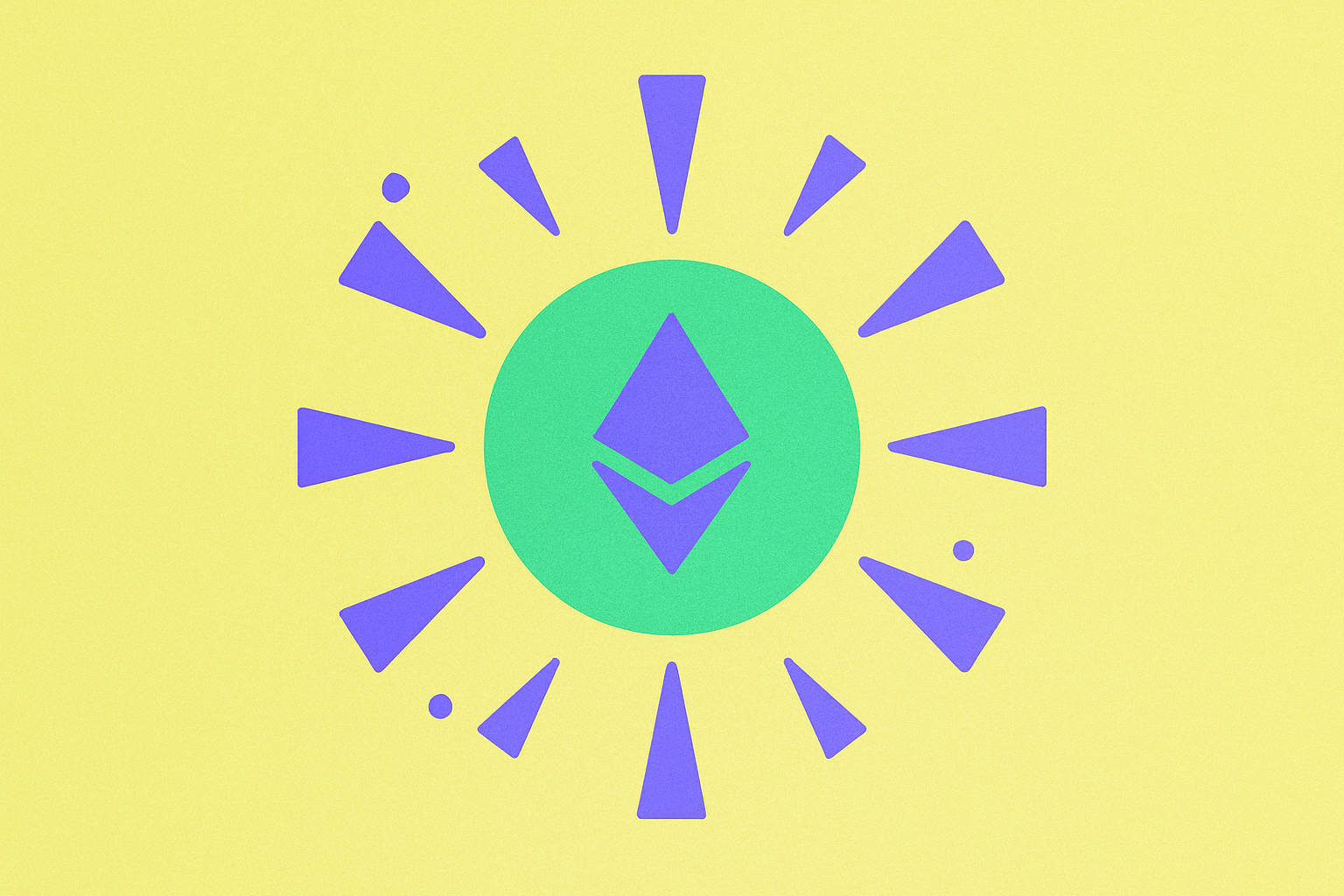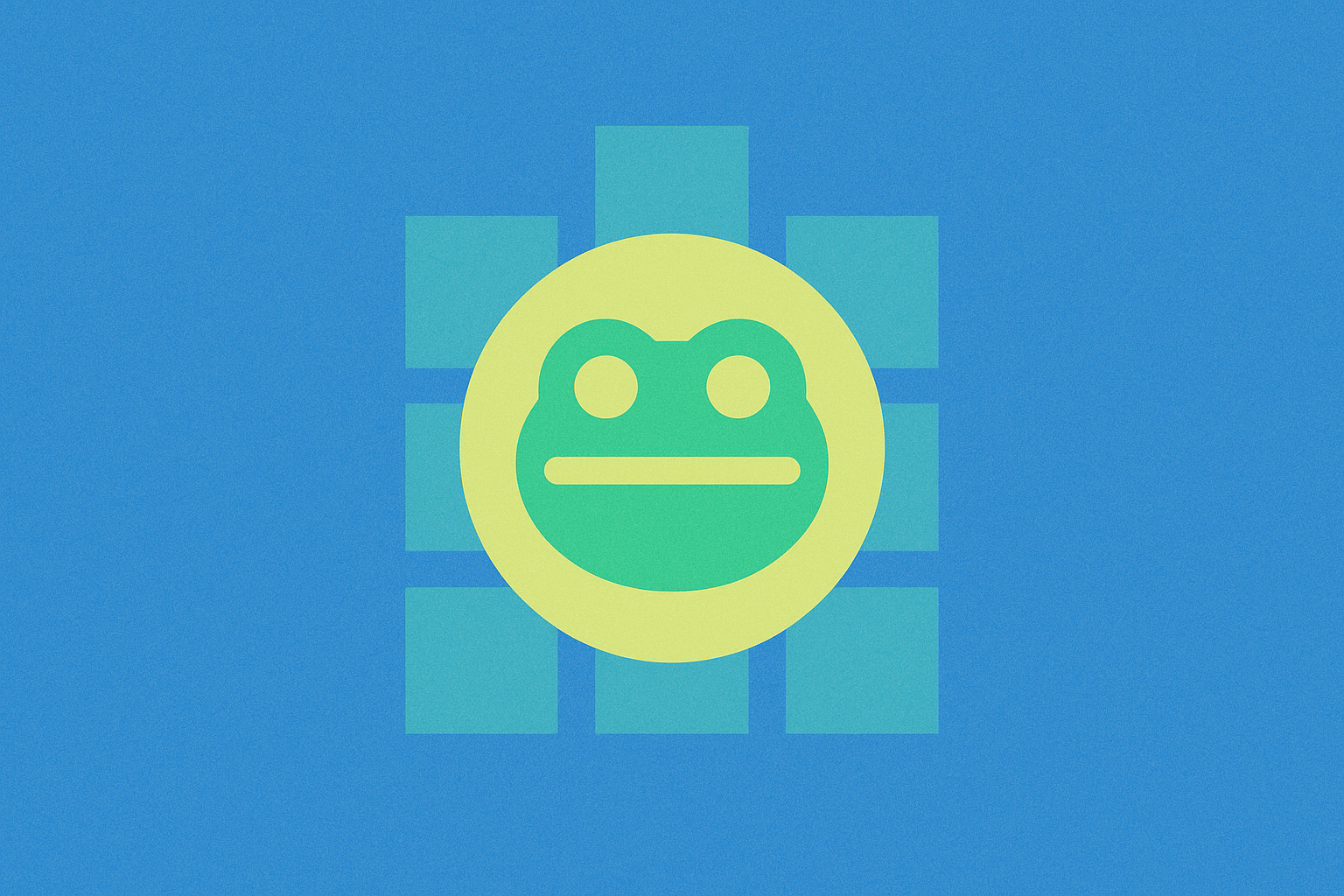IOTA (MIOTA) – 從Tangle起源到2025年價格展望


IOTA(MIOTA)是爲物聯網(IoT)經濟創造的創新分布式帳本平台。由IOTA基金會於2015年成立,旨在實現設備之間的免費小額交易。IOTA不使用傳統區塊鏈,而是運行在一種獨特的Tangle網路– 一種有向無環圖(DAG)結構,其中每筆新交易都會確認兩筆先前的交易。這種新穎的架構承諾具有很高的可伸縮性,無需挖礦和交易費用,使得IOTA非常適用於物聯網應用和機器對機器支付。盡管早期實現依賴於一個協調節點來確保安全性(引發了去中心化的爭論),但該項目一直在穩步向着一個完全去中心化的網路發展。IOTA的原生代幣MIOTA用於推動網路上的交易,並且可以在主要交易所進行交易。包括Gate.com),使任何人都可以參與IOTA生態系統。
背景: IOTA的起源和Tangle技術
IOTA的起源可以追溯到2010年代中期,當時一羣聯合創始人構想了一種針對物聯網設備和數據完整性進行了優化的加密貨幣。IOTA於2016年推出,向世界介紹了其“Tangle”——這是一個根本不是區塊鏈的分布式分類帳。在傳統的區塊鏈(如比特幣或以太坊)中,交易被分組到區塊中,並按線性順序添加,由礦工或權益者進行驗證。IOTA的Tangle,相比之下,是一系列個體交易的網路每次用戶發送IOTA交易時,他們的設備必須驗證網路中的另外兩筆交易。這種交織在一起的確認過程消除了專門的礦工需求,並允許網路在理論上獲得隨着活動的增加,速度更快,更安全. IOTA 上的交易實際上是無費, 這對可能涉及在傳感器、家電或車輛之間發送僅有幾分錢的物聯網場景來說,是一個巨大的優勢。
Tangle的設計使IOTA變得輕巧且適用於低功耗設備,但也伴隨着早期的折衷。因爲網路的安全最初取決於IOTA基金會運行的協調節點(以防止網路規模較小時的攻擊),一些批評者認爲IOTA在初期並不是完全去中心化的。IOTA團隊始終堅稱這只是一個臨時保障。多年來,他們一直在努力“無中心化”-計劃刪除協調員並實現自我維持、去中心化網路(通常稱爲IOTA 2.0隨着Coordicide的實施,IOTA旨在實現其最初的願景:爲蓬勃發展的物聯網打造一個可擴展、無需信任的分類帳,讓數百萬設備能夠無縫地進行價值和數據交易。
近期發展和升級(2023–2025年)
在過去的幾年裏,IOTA經歷了重大升級和發展,將項目定位爲增長的新篇章。2023是特別關鍵的一年, 由於IOTA基金會推出了能夠將IOTA的能力拓展至簡單物聯網交易之外的技術:
- Shimmer Network和智能合約:2023年初見證了的介紹閃爍,這是 IOTA 的暫存和創新網路。Shimmer 充當一種“沙盒”,在部署到主 IOTA 網路之前,可以使用自己的令牌 (SMR) 測試新功能。值得注意的是,IOTA 生態系統在 Shimmer 上推出了 ShimmerEVM——一條與以太坊虛擬機兼容的鏈,允許開發人員運行類似以太坊的智能合約和去中心化應用程式 (DApp)。這有效地將 DeFi、NFT 和其他智能合約用例首次帶入了 IOTA 領域。ShimmerEVM 測試網於 2023 年初上線,同年晚些時候,在 Shimmer 主網上的成功發布導致使用量激增(隨着項目和流動性進入網路,IOTA DeFi 生態系統中的鎖定總價值攀升)。通過啓用跨鏈橋(如LayerZero) 並促進新興的 DeFi 生態系統,IOTA 邁出了成爲 IoT 分類帳以外更大的加密金融基礎設施的大膽步伐。
- 星塵升級:2023年10月,IOTA主網本身接受了一個名爲的重大協議升級星塵. 此次升級爲IOTA的基礎層引入了靈活的代幣化框架。在實踐中,Stardust允許任何人在IOTA的第1層直接鑄造定制代幣或NFT,並支持第2層鏈的錨定。簡而言之,IOTA的基礎網路已經得到加強,以支持本地資產和無縫跨鏈轉帳打開了新的應用可能性,如遊戲代幣、數字收藏品和跨網路互操作性。除了Stardust之外,IOTA基金會還推出IOTA身分 1.0在2023年底的主網上 - 一個用於去中心化數字身份管理的模塊,對於物聯網設備和供應鏈跟蹤可能至關重要。這些更新標志着IOTA從一個小衆物聯網分類帳進化爲更多用途的Web3創新平台的重大進步。
- 組織和生態系統增長:在2023年和2024年,IOTA項目還在監管和組織方面奠定了基礎。IOTA基金會幫助建立了IOTA生態DLT基金會在阿布扎比,獲得了大約1.6億美元的IOTA代幣,以促進中東、非洲和亞洲等地區的採用。團隊還在制定新的加密貨幣框架(如歐盟的MiCA監管), 旨在確保IOTA的技術與關於數字資產、數據和可持續性的即將出臺的規定保持一致。這些舉措表明IOTA的策略是在監管範圍內開展合作,並促進真實世界的用例——例如,過去的合作探討了在智慧城市項目和汽車數據共享中使用IOTA(與諸如品牌合作)。捷豹路虎),以及供應鏈數字產品護照。持續關注點是將IOTA的技術整合到行業聯盟和政府試點項目中,增強其在加密泡泡之外的可信度。
- IOTA 2.0和Coordicide進展:到2025年初,人們期待已久的IOTA 2.0過渡終於即將到來。IOTA基金會一直在對新的共識算法(暱稱海星,這將爲完全去中心化的IOTA網路提供動力。他們已經運行了測試網絡和安全審計,以確保在沒有協調者的情況下,後Coordicide IOTA能夠運行而抵抗攻擊並保持吞吐量。這些努力的最終目標是“IOTA Rebased” 主網升級,計劃於2025年5月進行。此次升級將把當前網路(Stardust時代)遷移到一個新的網路版本,有效地推出下一代IOTA主網對於日常用戶和交易所來說,過渡設計得無縫(不需要新的代幣或交換- MIOTA仍然是貨幣)。然而,在幕後,IOTA Rebased將引入新的節點軟件,新的驗證器選擇過程,並可能在啓動進入去中心化過程中以一組受信任的驗證器啓動網路。這是邁向最終實現Coordicide的關鍵一步-消除協調者,並通過社區運行的節點以規模運行Tangle。進入2025年中期,IOTA的開發團隊和社區都對這一裏程碑感到振奮,因爲這可能會極大地提升人們對IOTA技術棧的信心。成功的升級意味着IOTA完全兌現了可擴展性和去中心化的承諾,這些承諾已經醞釀多年。
IOTA歷史價格表現
 [IOTA 價格走勢圖]
[IOTA 價格走勢圖]
IOTA的歷史價格圖表(USD)顯示出2017年和2021年的迅猛漲,隨後是明顯的熊市。
與許多加密貨幣一樣,IOTA的價格歷史也是一次過山車般的旅程,受創新炒作、市場週期和偶發挫折的影響。IOTA首次引起主流關注是在2017年底的ICO熱潮期間。在對新加密項目瘋狂追捧中,IOTA關於支持物聯網微支付的願景激發了投資者的想象力。MIOTA的價格從2017年中期的約0.50美元飆升至超過$5.00的歷史最高紀錄直到2017年12月。在巔峯時期,IOTA暫時躋身市值前5的加密貨幣之列,對於一個仍處於測試階段的項目來說,這是一項非凡的成就。這一飆升是由於對合作夥伴關係的興奮(例如,有傳言稱IOTA正在與公司合作Microsoft和博世在數據市場)和整體加密市場的狂熱。
然而,這場引人注目的漲勢之後是一次嚴厲的2018年的經濟衰退隨着加密泡沫的破滅,IOTA的價格從最高價下跌了90%以上。到2018年底,MIOTA的交易價格在0.20美元至0.50美元的範圍內。接下來的幾年中,IOTA進入了低迷期;其價格波動在2019年和2020年的大部分時間相對平淡,經常在0.50美元以下徘徊,而整個加密貨幣熊市期間以及項目悄然持續建設。這段時期的一個亮點是對Chrysalis 升級(在2021年實施)這進一步簡化了IOTA的代碼並提高了性能 — 但即便如此,這也只是更大變革的序曲。
2021年加密貨幣牛市爲IOTA注入了新活力。隨着比特幣和其他替代幣飆升,IOTA也沒有落後。2021年上半年,IOTA的價格再次攀升,達到了$2.50 by 四月 2021盡管沒有接近2017年的高點,但這是多年來IOTA見過的最強勢價格水平。促成這一漲勢的是對平台幣的新一輪興趣以及IOTA在Chrysalis方面取得的進展(該項目於2021年4月左右上線,降低復雜性並爲Coordicide鋪平道路)。投資者猜測,一個完全去中心化的IOTA可能會釋放更多價值。2021年中後期,隨着加密市場降溫,IOTA的價格回落;到2021年底,價格大約爲1.00美元以上。
2022年,對IOTA的估值來說是充滿挑戰的一年。宏觀經濟衰退和加密貨幣特定問題(如主要區塊鏈項目失敗和避險情緒)的結合使MIOTA下跌。此外,協調消除方面的一些延遲以及區塊鏈領域的增加競爭可能已經削弱了熱情。2022年,IOTA的交易大部分在0.50美元以下,到了年底,熊市達到最低點時,MIOTA曾一度跌至數年低點。$0.10盡管價格下跌,項目仍在不斷推進發展,長期持有者仍然爲承諾的技術突破而留下。
在 2023, IOTA的價格在實施升級的同時出現了適度的恢復。例如,Shimmer 網路啓動和Stardust升級幫助MIOTA反彈至低點。到2024年初,甚至在小型山寨幣反彈期間(隨着人們對即將到來的IOTA 2.0啓動的樂觀情緒增長),代幣的價格再次飆升至0.50美元以上。這種反彈表明,隨着項目按照路線圖的承諾交付,市場信心可以重返。然而,截至2025年上半年,IOTA仍遠低於其歷史高點, 交易價格大致在0.20美元到0.30美元的範圍內。代幣的整體走勢凸顯了高波動性——在牛市期間達到巨大高峯,在熊市階段則跌入低谷。長期追隨者指出,IOTA經歷了多次加密貨幣週期,其當前市場價格既反映了對項目目前階段的懷疑,也反映了潛在的潛力。
2025年IOTA價格預測
展望到2025年,IOTA價格的短期前景如何?加密貨幣價格預測總是棘手的,但IOTA即將到來的裏程碑和整體市場環境爲可能的情景提供了一些背景。在短期內,很大程度上將取決於IOTA 2.0過渡(Rebased升級)的順利進行以及整個加密貨幣市場是否進入新的牛市階段。以下是關於IOTA 2025年價格走勢的幾種觀點:
- 看漲情況:如果IOTA的新的全面去中心化網路成功啓動,並且更廣泛的加密貨幣情緒轉爲積極,對MIOTA的需求可能會顯著增加一個看漲的情景還可能假設 IOTA 開始在物聯網或 DeFi 用例中獲得真正的採用(例如,公司使用 IOTA 進行數據傳輸或新的 DeFi 項目吸引 Shimmer/IOTA 上的用戶)。在這種樂觀情況下,分析人士表示 IOTA 可能重新奪回更高的水平 - 可能在 2025 年底接近 1 美元甚至更高。這仍將低於其 2017 年的歷史最高水平,但如果該項目展現出切實的成功,這將標志着從當前價格強勁回升。
- 保守案例:另一方面,如果加密市場仍然溫和,或者IOTA的升級需要時間來證明其價值,價格可能保持相對穩定。更爲保守的展望是,IOTA 將在與年初相同範圍內橫盤交易,大致在0.20美元至0.30美元左右。在這種情況下,新投資者保持謹慎,IOTA的進展可能需要更長時間來影響價格。即使在技術上取得進展,來自其他區塊鏈/DAG項目的激烈競爭(以及贏得開發者的需要)可能會限制即時漲。因此,MIOTA在2025年結束時可能與開始時差距不大,特別是如果比特幣和大型加密貨幣的波動沒有催化小幣種的漲勢。
- 中等情況:一個中庸的預期將看到IOTA在2025年通過中等增長實現中等增長。這可能意味着價格逐漸漲至$0.50範圍到年底。這樣的結果可能反映了各種因素:IOTA 2.0 部署部分成功(顯示網路在沒有協調者的情況下運行),生態系統活動有所增加(可能有一些引人注目的 dApps 或合作夥伴吸引注意),以及整體改善的加密貨幣市場環境。雖然不是突破,但達到約 0.50 美元的水平將大致使當前價格翻倍,對於謹慎的投資者來說,這代表了合理樂觀的回報。這將表明市場開始對IOTA的未來潛力進行定價,盡管仍在等待大規模採用的證明。
總結這些潛在結果,以下是2025年IOTA的簡要價格預測概述:
 [IOTA 2025 Prediction]
[IOTA 2025 Prediction]
需要注意的是,這些數字是推測性的,實際表現可能有所不同。總的來說,加密貨幣市場受到許多因素的影響——從宏觀經濟趨勢和投資者情緒到特定項目的新聞和技術突破。IOTA在物聯網領域的定位意味着現實世界的採用新聞(如大規模行業實施)可能會對價格產生積極衝擊,就像更廣泛的市場下滑可能會將其拖入低於預期的水平。
結論
總的來說,IOTA (MIOTA) 在 2025 年面臨着一系列挑戰和機遇。其獨特的 Tangle 技術使其與典型的區塊鏈有所不同,持續升級正在將其引向去中心化和功能性新時代。歷史價格趨勢顯示,IOTA 在牛市時期可能會引發強烈的興奮(和價格飆升),盡管它也曾在長時間的熊市中掙扎。短期內,重點將主要集中在 IOTA 的主網轉型上,以及它是否能重新激活社區和開發者。投資者和加密愛好者將關注 IOTA 在 2025 年的故事情節是如何展開的 - 能否免費的物聯網交易的承諾最終轉化爲市場動能?幣種已經在 Gate 等交易所上市,大家都在關注着。Gate, 任何對IOTA的發展感興趣的人都可以輕鬆交易或投資。與任何加密資產一樣,謹慎樂觀和長期視角是關鍵。IOTA的故事仍在書寫中,2025年將是決定這個具有遠見的項目能否重振往日榮耀並在不斷發展的區塊鏈領域開拓新局的關鍵一章。

Hedera Hashgraph (HBAR):創始人、技術及2030年價格展望

Jasmy Coin:一個關於野心、炒作和希望的日本加密貨幣故事

2025年比特幣價格:分析和市場趨勢

Render深度剖析:代幣經濟、採用情況、Solana動態及價格展望

Rexas Finance (RXS):使命、動機和價格預測

Can SwissCheese (SWCH) Revolutionize Traditional Stock Trading?

Sol對GBP的解釋,爲什麼Solana的波動率創造了機會

以太坊2.0 升級進度時間表解析

新幣解釋,早期加密貨幣機會是如何創造的

2025年 Meme Coin 前景展望:深入剖析 PEPE 的未來潛力

2025深度洞察:Pepe Coin價格發展趨勢







